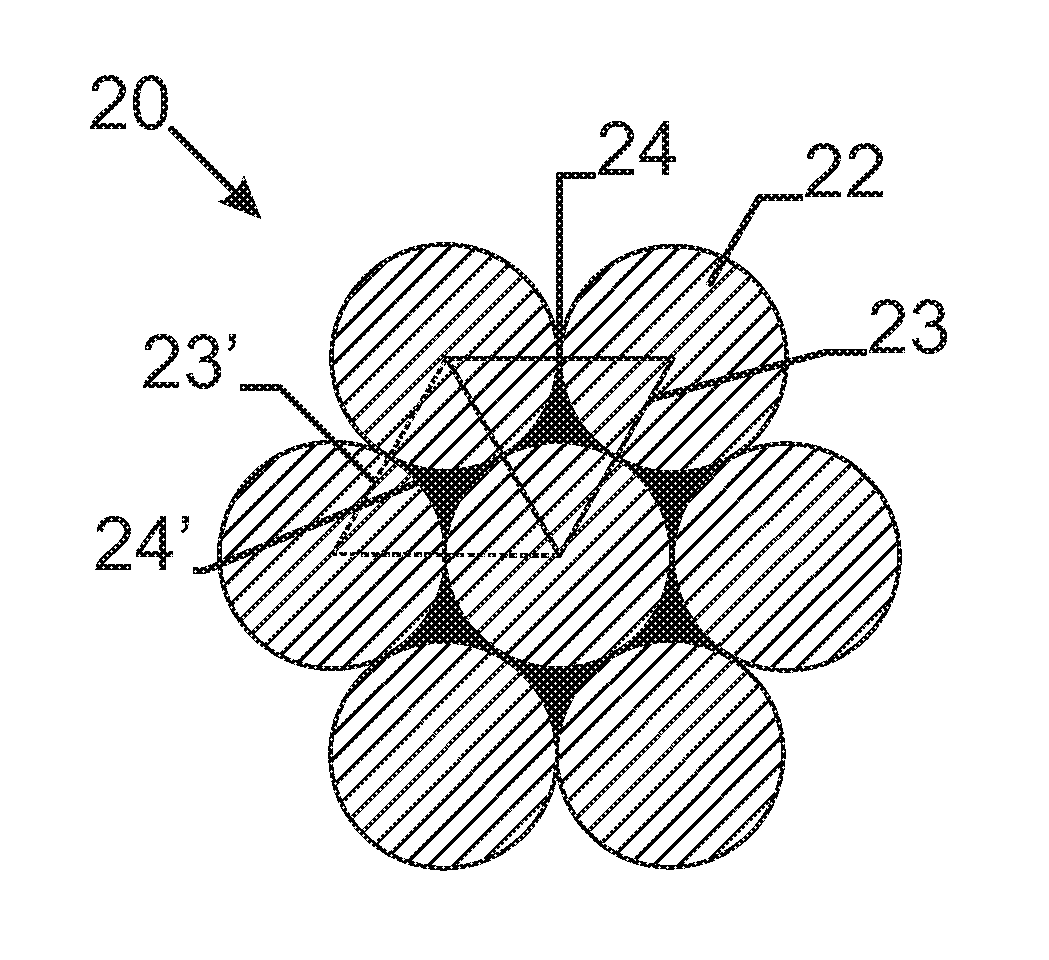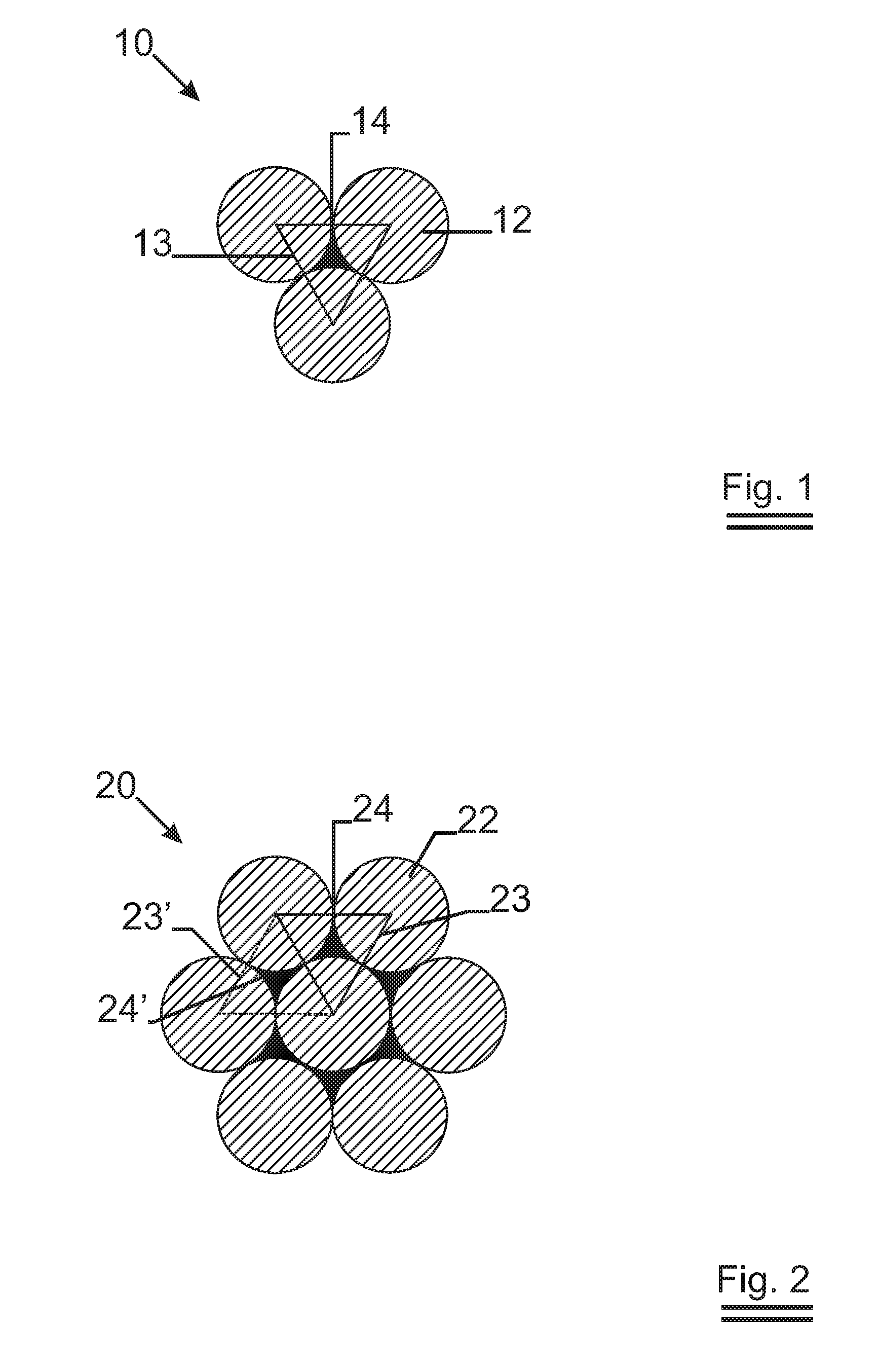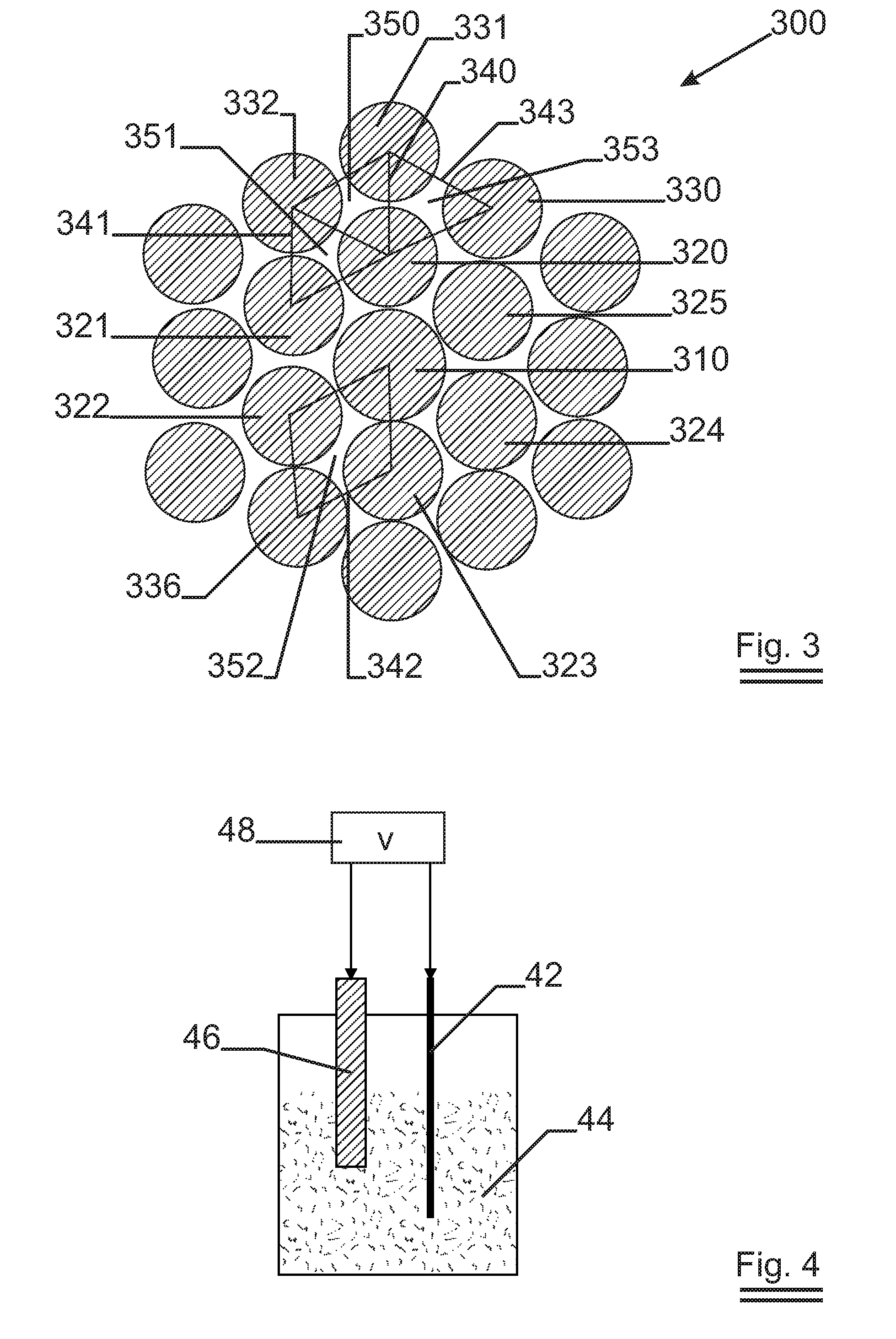Cord for reinforcement of a cementitious matrix
a cementitious matrix and cord technology, applied in the direction of yarn, textiles and papermaking, building components, etc., can solve the problems of galvanized steel elements, aesthetic problems, strength and durability problems, etc., and achieve the effect of preventing the evolution of hydrogen gas
- Summary
- Abstract
- Description
- Claims
- Application Information
AI Technical Summary
Benefits of technology
Problems solved by technology
Method used
Image
Examples
example 1
[0092]FIG. 1 shows a cross-section of a cord 10 for the reinforcement of a cementitious matrix according to the present invention. The cord 10 comprises three zinc coated metal filaments 12 twisted together. The three filaments form a closed sub-structure 13 whereby neighbouring filaments 12 of the closed sub-structure 13 are maximum 30 μm remote from each other. A void 14 is hereby formed in the middle of the three filaments 12 of the closed sub-structure 13. A protective compound, as for example benzimidazole is present in said void. Possibly, the protective compound is also present on at least a part of the zinc coated metal filaments 12.
example 2
[0093]FIG. 2 shows a cross-section of a cord 20 for the reinforcement of a cementitious matrix according to the present invention. The cord 20 comprises 7 filaments 22. Neighbouring filaments form closed sub-structures 23, 23′. Neighbouring filaments 22 of a closes-substructure are maximum 100 μm remote form each other. Voids 24, 24′ are formed in the middle of filaments of a closed substructure 23, 23′. A protective compound is present in the voids 24, 24′ of the closed substructures 23. Possibly, the protective compound is also present on at least a part of the zinc coated metal filaments 22.
example 3
[0094]FIG. 3 shows a cross-section of a brass coated compact cord 300 having a 0.34+18×0.30 construction. Around the central somewhat thicker filament 310 of 0.34 mm diameter, 18 filaments of diameter 0.30 have been cabled in one operation with a lay length of 21 mm in the Z direction. The cable has many voids. The filaments 320, 331 and 332 form a closed sub-structure 340 having a void 350 as the neighbouring filaments 320, 331 and 332 are less than 30 μm remote form each other. Similarly the filaments 320, 321 and 332 form a closed sub-structure 341 having a void 351 as the neighbouring filaments 320, 321 and 332 are less than 30 μm remote from each other. Also the filaments 310, 322, 336 and 323 form a closed substructure 342 having a void 352 as the neighbouring filaments 310, 322, 336 and 323 are less than 30 μm remote from each other. On the other hand the filaments 320, 330, 331 does not form a closed sub-structure as the filaments 330 and 331 are more than 100 μm remote from...
PUM
| Property | Measurement | Unit |
|---|---|---|
| wt % | aaaaa | aaaaa |
| wt % | aaaaa | aaaaa |
| lay length | aaaaa | aaaaa |
Abstract
Description
Claims
Application Information
 Login to View More
Login to View More - R&D
- Intellectual Property
- Life Sciences
- Materials
- Tech Scout
- Unparalleled Data Quality
- Higher Quality Content
- 60% Fewer Hallucinations
Browse by: Latest US Patents, China's latest patents, Technical Efficacy Thesaurus, Application Domain, Technology Topic, Popular Technical Reports.
© 2025 PatSnap. All rights reserved.Legal|Privacy policy|Modern Slavery Act Transparency Statement|Sitemap|About US| Contact US: help@patsnap.com



